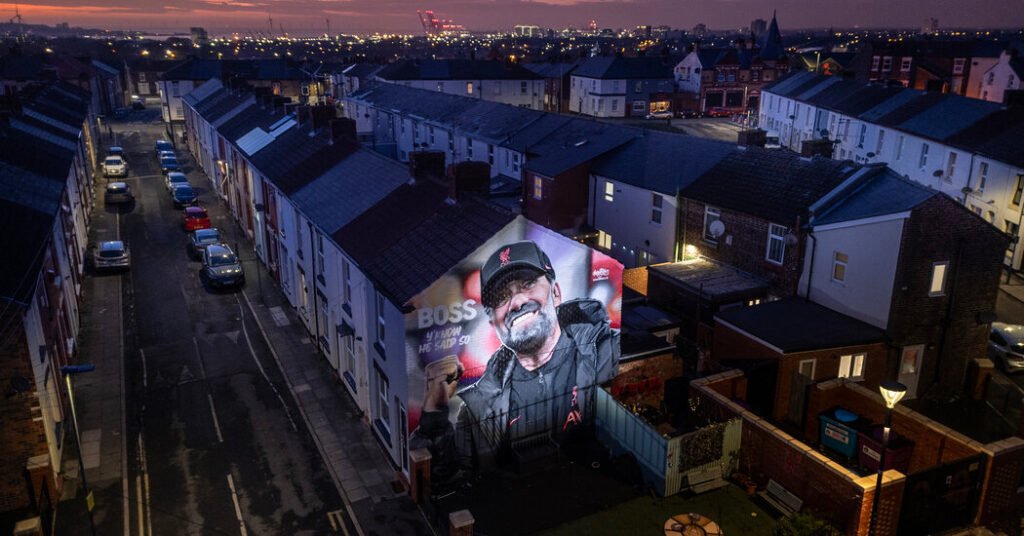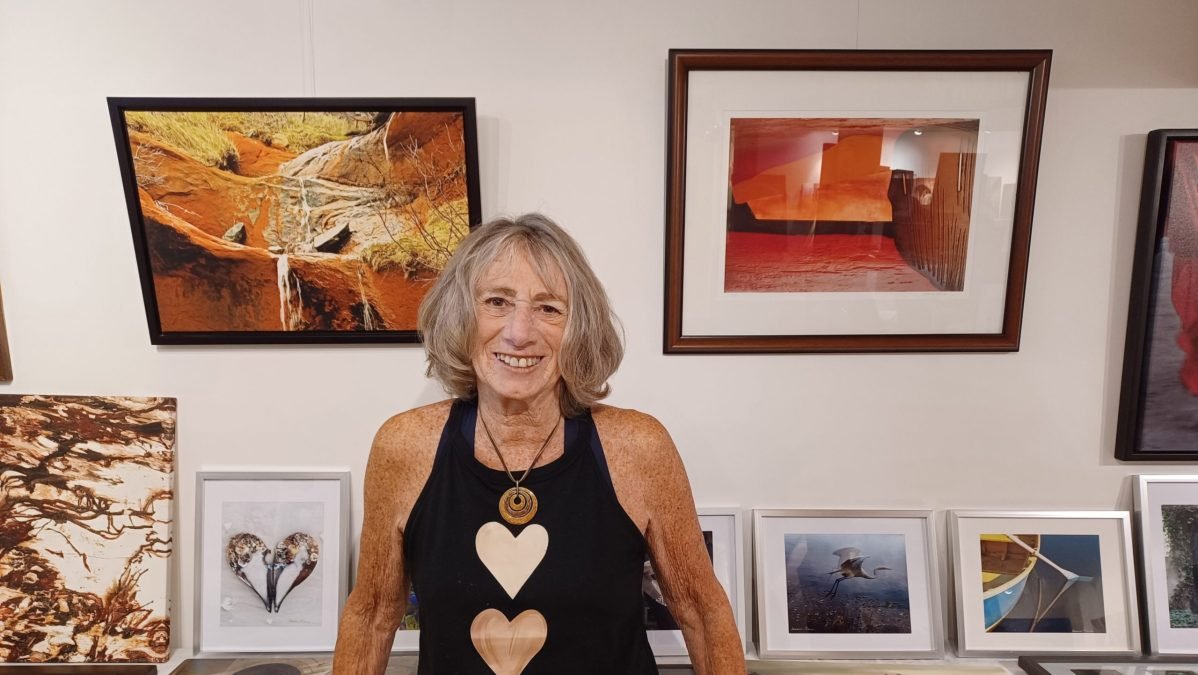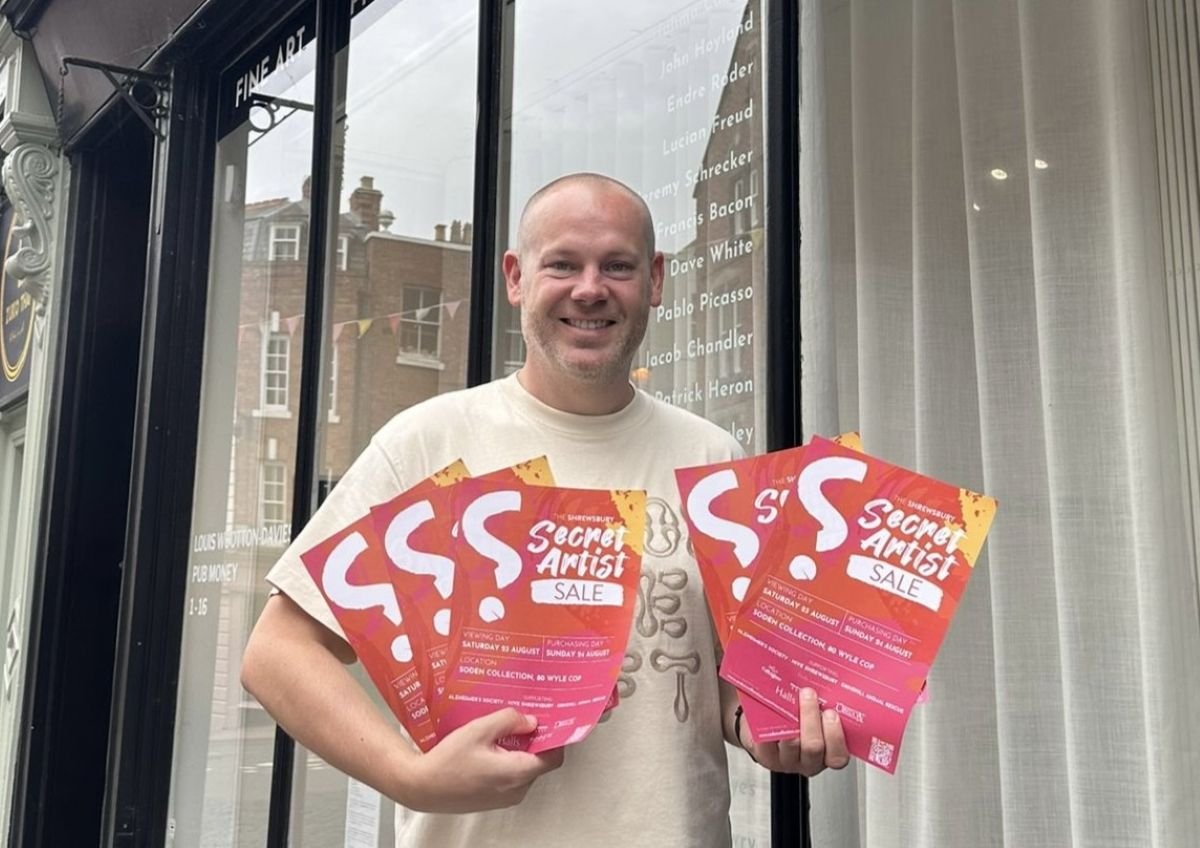Jürgen Klopp’s week had been full of goodbyes. Liverpool’s now former manager had bade farewell to the club’s staff at Anfield, the stadium that had sung his name and thrilled at his team for the last nine years, on Tuesday. A couple of days later, he and his players shared one last barbecue at Liverpool’s training facility.
In between, he had signed jerseys — “I don’t know how many, but everyone has one now,” he said — kept countless media commitments, shaken endless hands, received thousands of messages from well-wishers. He had found that particularly difficult, especially intense. “It’s been a lot,” he said.
Throughout it all, the prospect of his final appearance at Anfield had cast a pall. Klopp knew he would have to address the crowd. He would have to say goodbye to his people. He would have to make it real.
At times, during the game — a carefree, sun-drenched win against Wolves — he had dreaded what was to come. The crowd serenaded him ceaselessly. Fans brandished dozens of flags emblazoned with his name. Each of his players came to him for one of his signature hugs; all of them lingered. He started to worry, he admitted, that he would be “in pieces,” unable to speak.
He had no need. When the moment came, Klopp had Anfield in the palm of his hands, as he has for almost a decade: He had them at hello, and he had them at goodbye. He demanded the fans chant the name of his replacement. They complied. He told them to be “all in, for the first day.” They roared. He told them the future was bright, that what comes next will match what went before.
“Nobody tells you to stop believing,” he told the crowd. “I believe, because we have you: the superpower of world football.”
Klopp does not pretend to understand, not fully, why he has such connected so deeply with Liverpool’s fans — the club’s “people,” as he calls them. He suspects that his success has something to do with it: the fact that he has turned Liverpool into European, world and, for the first time in 30 years, English champions, restoring what had been a faded giant to the very front rank of European soccer’s great powers.
“I know that if you are Liverpool manager, people like you,” he said this week. “Until you disappoint them. And we never really disappointed them.”
Klopp’s impact, though, cannot be accurately weighed in silver and gold; he knows the bond is more profound than that. The trophies do not quite explain why the crowd, the club and the city have fallen so hard for him. There are bars and hotels named after him. And his face — the bright white grin, the beard now more salt than pepper — beams out from half a dozen murals around the city.
The first of them, in the Baltic Triangle, went up in 2018, painted by the French street artist Akse on the wall of a motorcycle garage. It was a surprisingly easy negotiation, given that John Jameson, the building’s owner, is a dyed-in-the-wool fan of Everton, Liverpool’s fierce city rival.
“He thought it would be good for business,” said his son, also John Jameson. The thinking, the son said, was that even Liverpool publicity “was good publicity.”
Other murals soon followed, some commissioned by the club itself, some by fan groups and some — more recently — as rather more blatant advertisements.
Liverpool can feel, at times, like a city of soccer-themed murals. Several more are dedicated to current or former players. “It’s starting to feel a bit like an insult if you don’t have one,” said Shaun O’Donnell, a co-founder of BOSS Nights, a live music brand geared toward Liverpool fans.
No subject is more popular, though, than Klopp. BOSS lent its name to another early mural of him, right around the corner from Anfield, as a play on the word’s dual meaning in Liverpool: both “person in charge” and “great.”
O’Donnell was conscious that he did not want to be seen to be “jumping on a bandwagon” by doing another mural. For Klopp, though, he was prepared to make an exception. “We owe him everything,” he said. “Everything we’ve been able to do, it’s all down to Jürgen.”
Initially, BOSS Nights were distinctly small-scale events: a few dozen friends, familiar from long road trips following Liverpool, gathering in bars around the Baltic Quarter to listen to live music. Klopp’s arrival, the jolt of electricity he sent running through the club, turned it into something else.
In 2019, the year that Klopp led Liverpool to the Champions League title, BOSS staged a show at a fan park in Madrid, where the final was held. It attracted tens of thousands of fans. Jamie Webster, who started out performing in O’Donnell’s shows, now has more than 50 million streams on Spotify. His rendition of “Allez Allez Allez,” the most enduring of the fan anthems from Klopp’s era, has been played 16.5 million times.
“This wouldn’t have happened for just any manager,” O’Donnell said. “Maybe it’s his charisma, but there’s something about him. The atmosphere at the ground has gone up a notch. He makes you want to contribute. There’s a feeling that they need us as much as we need them.”
O’Donnell frequently receives calls from pubs and bars around Anfield asking if he can recommend a singer or a guitarist for a show before games. “That didn’t used to happen,” he said. “Live music and football were never really a thing here. Getting someone to do Liverpool songs wouldn’t necessarily be cool. It’s become cool because of him.”
That is part of what Neil Atkinson, a co-founder of The Anfield Wrap, the most prominent outlet in Liverpool’s blossoming fan media scene, describes as a “new covenant of what we want supporting our team to be.”
Klopp has always demanded “unconditional support” of his team, Atkinson said. Early in his tenure, Klopp would regularly turn to the fans closest to him at Anfield and demand they make more noise. He has more than once railed against those who leave early to beat the traffic. “In exchange, he creates the mood for everyone to enjoy it the way they want to enjoy it,” Atkinson said.
That inclusivity has been an important strand in Klopp’s appeal. In an open letter to Klopp, Alison McGovern — a local Labour lawmaker and an Anfield season-ticket holder — thanked him not only for “showing publicly that women, gay women, all women, are a part of our club,” but for being able to place soccer into its correct context.
“When Covid struck, you shouted at the fans who lent over for a high five,” she wrote. “You told people what they needed to do: Get tested, get a vaccine.” His description of football as not a matter of life and death was important, she added. “It is there for enjoyment. It should be the fun in family life, never a force or a justification for abuse.”
She found even the manner of Klopp’s departure — he announced in January that he would leave at the end of the season, admitting he had “run out of energy” — welcome. “Making it clear that you see honesty and frankness as the right response to those feelings of tiredness and exhaustion helps everyone see that our heroes are all the better for being real humans,” she wrote.
That ability to keep soccer in perspective is perhaps the best explanation for Klopp’s enduring, soaring popularity. What matters, he said again this week, is the journey, not the destination. That sincere belief has helped him retain the faith of fans even during leaner spells.
“The most enjoyable year I’ve had supporting Liverpool was 2018,” Atkinson said. “Seeing the team work itself out. Seeing what it might become.
“We didn’t win anything, and it didn’t matter,” he said. “That’s Klopp’s biggest gift.”
Klopp was not looking forward to Sunday, and that final farewell. “Saying goodbye is never nice,” he said. “But if you said goodbye without feeling sad, or hurt, that would mean the time together had not been right.”
For the fans or for the city, if anything, it was going to be even more difficult. When the contract for the original mural of Klopp, outside the motorcycle garage, expired a few years ago, the proprietors asked Akse, the artist, if he might like to paint over it. He refused.
Instead, he has come down occasionally over the years to touch it up. “Sometimes Everton fans come and vandalize it,” the younger John Jameson said. “You see the graffiti when you come in on Monday morning.”
He does not think there is any reason to do anything but maintain it now. “We get a coach-load of tourists every day, at least,” he said. “It’s like it’s on the tour: first stop the Cavern Club, second stop the Klopp mural.” Nine years after Klopp arrived in Liverpool, his image has become an indelible part of the city’s iconography. “It looks like he’s staying,” Jameson said.






